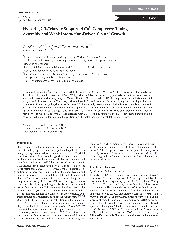摘要
Two new dinuclear Cu-II complexes [Cu2Cl4(L1)(2)] (1) and [Cu2Cl4(L2)(2)] (2) (L1 = 2-((4-(2-(cyclopentylthio)ethyl)-1H-1,2,3-triazol-1-yl)methyl)pyridine; L2 = 2-((4-(pyridin-2-yl)-1H-1,2,3-triazol-1-yl)methyl)benzonitrile) were synthesised and characterised by single-crystal X-ray diffraction (XRD), powder XRD, thermogravimetric analysis, elemental analysis and IR measurements. The picolyl-triazole ligand L1 coordinates in a chelate-bridging mode forming a dinuclear structure 1. The more rigid pyridyl-triazole ligand L2 chelates only, generating a chloride-bridged dinuclear complex 2. Both crystals of complexes 1 and 2 show dominant plate shapes that correlate with weak 2D H-bonding interactions in the lattice. A mononuclear structure (3, [CuCl2(L3)(2)]center dot 6H(2)O, L3 = 3-((4-(pyridin-2-yl)-1H-1,2,3-triazol-1-yl)methyl)benzonitrile) yields block shape crystals that correlate with 3D H-bonding interactions. This study demonstrates tunable assembly at the molecular level and the relationship of crystal shape with weak lattice interactions.
- 出版日期2016
